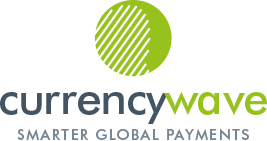It is estimated that some $4 – $5 trillion of currency is traded every day in foreign exchange making it by far and away the largest financial market in the world. Around three quarters of this daily volume is related to transactions undertaken by large institutions such as banks and hedge funds and other market participants speculating on short term currency movements. The remaining quarter of daily volume is transacted for what is known as ‘deliverable FX’. These are foreign exchange transactions to pay for goods and services resulting in currency being sent in a cross-border payment.
The ‘interbank rate’
The pricing of a foreign exchange ‘pair’ in the FX market (for example GBP/USD) is known as the ‘interbank’ rate and this represents the wholesale rate at which the large institutions will buy and sell currency with each other. For everyone else looking to do an FX trade, they must use the services of a bank or FX broker. The bank or broker make their money by applying what is known as a ‘spread’ or ‘mark-up’ to the ‘interbank’ exchange rate as well as making a charge for sending the payment.
Example: – Acme Widgets Ltd receives an invoice to pay an overseas materials supplier US $75,000. They approach their bank and are quoted an exchange rate of 1.31710 to buy the required US Dollars. Acme Widgets Ltd instructs the bank to buy the US$ and is then debited with the cost of £56,943.28 ($75,000/ 1.31710) from their bank account.
What Acme will not be aware of is that the bank bought the US Dollars in the currency market at an interbank rate of, perhaps, 1.35784 which cost the bank £55,234.78 ($75,000/1.35784). The difference between what the bank paid for the US Dollars (£55,234.78) and the amount charged to Acme (£56,943.28) represents the bank’s profit and, in this example, it amounted to £1,708.50. The difference between the interbank rate (1.35784) and the rate quoted to Acme (1.31710) is the bank’s ‘spread’ and this charge can vary from bank to bank, from transaction to transaction and from one currency to another.
By comparison, CurrencyWave would apply a spread charge of only £277.60 on the above example, representing a massive saving of £1,430.90 in spread charges on this transaction. Furthermore, we will not make any charge for sending the international payment which can save up to another £25 in bank charges.
How does CurrencyWave make its money?
CurrencyWave makes its money in very much the same way as the banks and FX brokers do but because we do not carry the same high overheads and we utilise more efficient technology, we apply much smaller spreads to the exchange rates quoted on the Currencycloud platform. In this way we can offer substantial savings on the charges levied by banks and brokers.
Compare like for like
When comparing the cost of sending an international payment through different providers, it is important to determine all the elements that make up the charge, not just those that the bank or broker chooses to disclose. As the biggest part of the cost is the mark-up applied to the exchange rate, CurrencyWave’s pricing model allows customers to make a truly informed decision.
More Insights